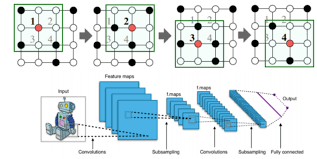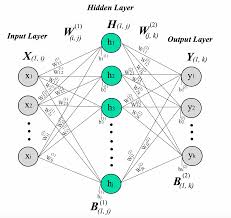Bagging Neural Networks: Enhancing Model Performance and Robustness
In the ever-evolving field of machine learning, neural networks have become a cornerstone for solving complex problems across various domains. However, like any model, neural networks can be prone to overfitting and may not always generalize well to unseen data. One effective technique to enhance the performance and robustness of neural networks is bagging, or Bootstrap Aggregating.
What is Bagging?
Bagging is an ensemble learning technique that aims to improve the stability and accuracy of machine learning algorithms. It involves training multiple models on different subsets of the training data and then combining their predictions. By aggregating these predictions, bagging reduces variance and helps mitigate overfitting.
How Bagging Works with Neural Networks
When applying bagging to neural networks, the process involves creating several copies of a base neural network model. Each copy is trained on a different bootstrap sample—a random sample with replacement—from the original dataset. This means that each model sees a slightly different version of the training data.
The final prediction is obtained by averaging the predictions from all individual models (in regression tasks) or by taking a majority vote (in classification tasks). This aggregation helps smooth out errors that individual models might make due to their exposure to different subsets of data.
Benefits of Bagging Neural Networks
- Reduced Overfitting: By averaging multiple models, bagging reduces the likelihood that noise in any single dataset will lead to overfitting.
- Improved Generalization: The ensemble approach helps create a more generalized model that performs better on unseen data.
- Increased Stability: Variations in training sets are less likely to impact overall performance, leading to more stable predictions.
- Error Reduction: Combining predictions from multiple models can help cancel out errors made by individual models.
Challenges and Considerations
While bagging offers numerous advantages, it also comes with certain challenges:
- Computational Cost: Training multiple neural networks can be resource-intensive in terms of both time and computational power.
- Tuning Complexity: Choosing appropriate hyperparameters for each model in the ensemble can be complex and may require extensive experimentation.
- Diminishing Returns: Beyond a certain point, adding more models may yield diminishing improvements in accuracy.
Conclusion
Bagging neural networks is a powerful technique for improving model performance by leveraging the strengths of ensemble learning. While it requires careful consideration of computational resources and hyperparameter tuning, its ability to reduce overfitting and improve generalization makes it an invaluable tool for practitioners seeking robust machine learning solutions. As research continues in this area, new advancements are likely to further enhance its effectiveness across diverse applications.
If you are working with neural networks and seeking ways to boost their performance, consider implementing bagging as part of your strategy for building more reliable models.
6 Essential Tips for Optimizing Neural Network Performance
- Use proper data preprocessing techniques to improve model performance.
- Experiment with different network architectures to find the most suitable one for your task.
- Regularize your neural network to prevent overfitting.
- Utilize techniques like dropout and batch normalization to improve generalization.
- Monitor the training process closely and adjust hyperparameters accordingly.
- Consider ensembling multiple neural networks for improved performance.
Use proper data preprocessing techniques to improve model performance.
Utilizing proper data preprocessing techniques is crucial when employing bagging with neural networks to enhance model performance. By carefully cleaning, normalizing, and transforming the input data before training the individual models in the ensemble, you can help ensure that the neural networks learn more effectively and make better predictions. Preprocessing steps such as handling missing values, scaling features, and encoding categorical variables can contribute to a more stable and accurate model by reducing noise and inconsistencies in the data. Investing time in preparing the data appropriately can significantly impact the success of bagging neural networks and lead to more reliable outcomes in various machine learning tasks.
Experiment with different network architectures to find the most suitable one for your task.
To optimize the performance of bagging neural networks, it is crucial to experiment with various network architectures to identify the most suitable one for your specific task. By testing different configurations, such as varying the number of layers, neurons per layer, activation functions, and regularization techniques, you can fine-tune the model to better capture the underlying patterns in your data. This iterative process of exploring diverse network structures allows you to enhance the model’s ability to learn complex relationships and improve its overall predictive accuracy and robustness.
Regularize your neural network to prevent overfitting.
To prevent overfitting when bagging neural networks, it is crucial to apply regularization techniques to each individual model in the ensemble. Regularization helps control the complexity of neural networks by adding penalties to the loss function, discouraging overly complex models that memorize noise in the training data. By incorporating regularization methods such as L1 or L2 regularization, dropout, or early stopping, you can promote generalization and enhance the overall performance and robustness of each neural network within the bagging framework.
Utilize techniques like dropout and batch normalization to improve generalization.
To enhance the generalization capabilities of bagged neural networks, it is advisable to incorporate techniques such as dropout and batch normalization. Dropout helps prevent overfitting by randomly deactivating a certain percentage of neurons during training, forcing the network to learn more robust features. On the other hand, batch normalization normalizes the activations of each layer, making training more stable and accelerating convergence. By integrating these techniques into the bagging process, neural networks can achieve improved generalization performance across a wide range of datasets and tasks.
Monitor the training process closely and adjust hyperparameters accordingly.
To maximize the benefits of bagging neural networks, it is crucial to monitor the training process closely and adjust hyperparameters accordingly. By keeping a close eye on the model’s performance during training, you can identify any signs of overfitting or underfitting early on and make timely adjustments to improve the model’s accuracy and generalization capabilities. Tuning hyperparameters such as learning rate, batch size, and regularization strength based on the observed behavior of the ensemble models can help optimize their performance and ensure that they are effectively leveraging the benefits of bagging.
Consider ensembling multiple neural networks for improved performance.
When aiming to enhance the performance and robustness of neural networks, it is advisable to consider ensembling multiple models through techniques like bagging. By training and combining several neural networks on different subsets of data, the ensemble approach can lead to improved overall performance. This strategy helps mitigate overfitting, increase model generalization, and enhance prediction stability by leveraging the collective strengths of multiple models. Embracing ensembling methods like bagging can be a valuable asset in optimizing neural network performance across various machine learning tasks.




